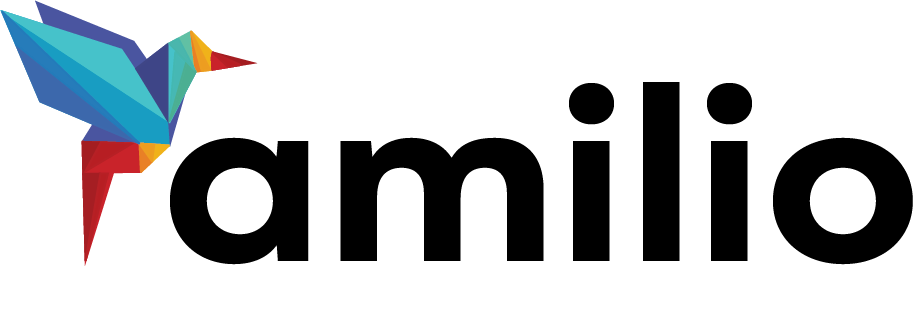Article
WCAG: What is it and what do I need to know?
By following WCAG, your business can expand its audience, improve brand reputation, and tap into a larger market, all while promoting inclusivity and reducing future maintenance costs.
23 September 2024 • 7 min read
Related
Read me
In today's digital age, businesses are expected to provide a seamless and inclusive online experience to everyone, including individuals with disabilities. Website accessibility ensures that all users, regardless of their abilities, can easily access and navigate digital platforms. The Web Content Accessibility Guidelines (WCAG) serve as the global standard for achieving this goal.
In what follows we explore what WCAG is, why adhering to it is essential for businesses, and how it can boost your website's audience, usage, and overall success.
What is Web Content Accessibility Guidelines (WCAG)?
The Web Content Accessibility Guidelines (WCAG) are a set of technical standards created by the World Wide Web Consortium (W3C). These guidelines aim to make web content more accessible to people with disabilities. WCAG helps you to ensure that your website is usable by individuals who may have vision, hearing, cognitive, or motor impairments.
Figure 1WCAG three levels of conformance

Enhanced User Experience
WCAG compliance ensures that your website is user-friendly for everyone, including those who may have challenges with vision, hearing, motor functions, or cognitive abilities. By providing alternatives like captions, transcripts, text enlargements, or keyboard navigability, you make it easier for a broader audience to access and understand your content.
Legal Compliance
Failing to adhere to WCAG guidelines can result in legal consequences. In many regions, accessibility is mandated by law, particularly for businesses and public entities.
Expanded Audience Reach
By making your website accessible, you are opening up your digital platform to an estimated 1 billion people worldwide living with some form of disability. Ensuring that everyone can use your website means you’re not alienating potential customers. Moreover, accessible websites tend to perform better in search engine rankings, which leads to better organic reach and visibility.
Improved Search Engine Optimization
Many accessibility improvements, such as providing alt text for images or creating clear, hierarchical structure with headings, are also best practices for SEO. Search engines like Google prioritize well-structured, understandable, and accessible websites, leading to better rankings and increased traffic.
Increased Customer Loyalty and Brand Reputation
Businesses that invest in accessibility demonstrate that they care about inclusivity and corporate social responsibility. When customers experience a positive, barrier-free interaction with your website, they are more likely to become loyal and recommend your services to others. This not only fosters goodwill but also enhances your brand reputation.
Ethical Responsibility
One of the most compelling reasons to follow WCAG is the ethical responsibility of providing equal access to information and services. Everyone, regardless of their abilities, should have the same opportunity to engage with your content, products, or services. Ensuring accessibility promotes inclusiveness and removes barriers for individuals with disabilities.
Staying Ahead of Regulations
Many countries have enacted laws requiring businesses to adhere to accessibility standards. In the United States, the ADA has been interpreted to apply to websites. In Europe, the European Accessibility Act and other country-specific regulations mandate digital accessibility. By following WCAG, businesses can stay ahead of regulatory requirements, avoiding costly lawsuits or forced compliance retrofitting.
Lower Maintenance Costs
Building an accessible website from the start is much more cost-effective than retrofitting an inaccessible site. By designing with WCAG in mind, you reduce the risk of needing extensive updates later. Consistent use of accessible design also makes ongoing maintenance easier, as accessibility principles tend to align with good web design and development practices.
Broaden Market Share
People with disabilities represent a significant portion of the consumer market, with spending power estimated at over $6 trillion globally. By making your website accessible, you're tapping into a large, underserved market. Additionally, an accessible website tends to benefit all users, including the elderly, people with temporary disabilities, or those using mobile devices.
Reaching a Global, Diverse Audience
By adhering to WCAG, your website becomes accessible to individuals with disabilities around the world. This not only includes those with permanent disabilities but also temporary impairments, like a broken arm, or situational limitations, such as accessing a website in bright sunlight or in a noisy environment. Accessible websites appeal to a broader range of users, ultimately driving more traffic.
Boosting Mobile Accessibility
Mobile devices have become the primary method of accessing the internet for many users. WCAG compliance, especially features like flexible layouts, resizable text, and touch-friendly navigation, ensures that your site is optimized for mobile use. This opens your site to an even larger audience, as mobile usage continues to grow globally.
Increased Engagement and Lower Bounce Rates
When users find it easy to navigate and interact with your website, they are more likely to stay longer, engage more deeply with your content, and return for future visits. Accessibility features such as clear navigation, properly labeled links, and descriptive buttons reduce user frustration, leading to higher satisfaction and a lower bounce rate.
Better Adaptation to Emerging Technologies
As technology continues to evolve, websites that comply with WCAG standards are more likely to adapt seamlessly to new devices and platforms, such as voice assistants, smart devices, and next-generation screen readers. WCAG compliance ensures that your website remains future-proof, prepared for the next wave of digital innovation.
WCAG as a Business Imperative
Incorporating WCAG into your website is not just about compliance—it’s about creating an inclusive, ethical, and forward-thinking digital experience. The benefits of accessibility are far-reaching, from expanding your audience and improving SEO to enhancing customer satisfaction and avoiding legal issues. For businesses looking to maximize their online presence, making accessibility a priority is a sound business decision.
By following WCAG guidelines, your business can build a reputation for inclusivity, foster loyalty, and ensure that all users, regardless of ability, can access and benefit from your digital products or services.
Tags
To find the solution that is best suited for your needs

